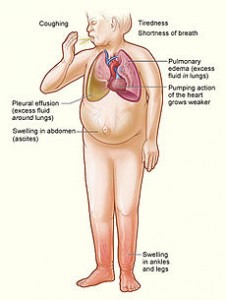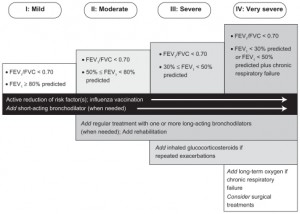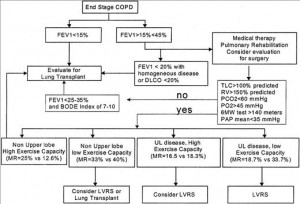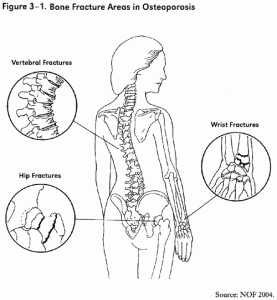Welcome to my Capstone site!
Chronic Disease Comorbidities in the COPD Lung Transplant Population
By: Cassandra Short, SPT
Introduction:
Chronic disease comorbidities are frequently present in the Chronic Obstructive Pulmonary Disease (COPD) patient population awaiting lung transplantation. The identification and implementation of strategies to prevent, maintain, or treat these comorbidities is important in the reduction of post-transplant hospitalization and mortality. Three common comorbidities in the COPD patient population are heart failure (HF), diabetes mellitus (DM), and osteoporosis (OP). These comorbidities may be causal, a complication, a concurrence, or an intercurrent process. Comorbidities in COPD can increase social repercussions and annual cost of the disease, but are also a prognostic factor for mortality.
Although there are many comorbidities in the COPD population, I chose to focus on three common types to help educate others on their prevalence and management. My goal for this project was to help other student therapists and existing therapists easily identify each comorbidity relationship with COPD and guide their plan of care based on the basic recommendations.
Global initiative for chronic Obstructive Lung Disease (GOLD)
Staging System for COPD
Personal Learning Objectives:
- Review the current research on three chronic disease comorbidities in the COPD population: heart failure, diabetes, and osteoporosis.
- Identify the impact of these three comorbidities on lung transplantation outcomes.
- Plan and provide educational information that is effective for patient or family instruction.
- Design and deliver an effective presentation of information synthesized through literature review.
- Provide general intervention strategies for these three comorbidities within the Duke Center for Living.
My original inspiration for this project was related the coursework I completed in our Evidence Based Practice II class, where I investigated the benefits of a pre- and post-pulmonary rehabilitation program for COPD patients undergoing lung transplantation. My evidence table highlighted the effects of pre- and post-lung transplant rehabilitation on outcomes 1-year post-surgery.
Steps Taken Awaiting Lung Transplant
Literature Review:
I began with a literature search to investigate each comorbidity and their relationship with COPD. I compiled a summary of articles that I found most helpful in describing the prevalence and effects in patients with COPD. Other resources that I used to develop my project and that may be helpful to clinicians working with this population have been compiled into a list of additional references. For my Capstone project, I presented an educational in-service to employees in the cardiopulmonary rehabilitation unit at the Duke Center for Living. The in-service incorporated ways to provide patients with educational information concerning their comorbidities as well as the general interdisciplinary management of each comorbidity.
Educational Objectives:
- Identify heart failure, diabetes, and osteoporosis as separate chronic diseases
- Identify criteria in COPD that leads to lung transplantation
- Understand the impact of heart failure, diabetes, and osteoporosis on the COPD population
- Be aware of intervention strategies that can be used in the management of COPD and these comorbidities
- Understand ways to educate patients about their comorbidities
Heart Failure

Materials:
Materials that were provided include an educational patient brochure (HF, DM, OP) and clinician flow-chart (HF, DM, OP) for each comorbidity, a PowerPoint presentation, and a patient materials feedback form and presentation feedback form.
Diabetes Mellitus
Leading up to my presentation, I came up with the idea to make an additional patient resource for each comorbidity. I thought that these patients could benefit from having a business card-sized symptom “check” card to keep in their wallets for easy access in case they were experiencing medical problems. I got the idea from a debit or check card, and coined it a Symptom “Check” Card (even though there is no money on this card, unfortunately!). Here are the templates for each card that were cut down to size for distribution: HF, DM, OP.
Osteoporosis
Feedback:
Overall, each of the 10 people that attended my in-service submitted positive feedback on each feedback form (provided above). For the presentation feedback form, there were 5 questions with answer selections of “Strongly Agree, Agree, Neutral, Disagree, and Strongly Disagree.” Answers to the presentation questions ranged from “Agree” to “Strongly Agree.” For the patient material questions, there were 4 questions with the same answer selections. These answers also ranged from “Agree” to “Strongly Agree.” Generally, each person commented on how much they loved the Symptom “Check” Cards and thought they were a great idea. One particular therapist mentioned that adding a specific contact phone number provided by the hospital would be helpful, and that the clinic might actually consider implementing their use! I was thrilled that this idea was so widely accepted and needed!
In Summary:
Overall, this project helped me to prepare for my upcoming rotation at the Duke Center for Living. I had hoped to help other students as well as therapists understand the importance of recognizing various comorbidities within this patient population, and I believe that I reached this goal. I am planning on expanding my knowledge of supported interventions through another inservice during my time at Duke. I hope to provide more specific evidence-based strategies for therapeutic intervention to supplement my general educational inservice that I delivered for my Capstone.
A special thank you to:
Sean Lowers PT, DPT, CCS – Duke Center for Living (Committee Member)
Rebecca Crouch PT, DPT, MS, CCS, FAACVPR – Duke Center for Living (Committee Member)
Mike Gross, PT, PhD – UNC-CH Division of Physical Therapy (Faculty Advisor)






3 Responses to “Chronic Disease Comorbidities in COPD Lung Transplantation”
Mike Gross
Cassie-You did a nice job on all phoses of the project. i particularly liked the flow charts for clnicians and the patient education and checklist materials that you produced. These are all great end-products. I also liked the resources such as websites that you provided to patients. The only constructive crititque that I would offer is that you might have included more references in preparing the power point as the background work for all of your other products. Mike Gross
clshort
Hi Megan- thanks for the comment!
COPD is definitely a condition that goes hand in hand with several comorbidities. Heart failure, diabetes, and osteoporosis are just three of numerous comorbid diseases. Examples include, hypertension, stroke, arthritis, cancer, depression, renal failure, liver disease, obesity, etc. I found it particularly interesting how many of these comorbidities (while as we know come hand in hand) had reciprocating affects on one another. For example, medications that help one, may hurt another. Finding the balance of their management, and being aware of each patient’s individual comorbidities will help tailor their treatment plan in the best way possible.
Thanks for the compliment on the symptom “check” cards! I decided to choose what I found to be the most common signs and symptoms of each condition. Specifically, the ones that could change day to day, which may indicate a problem in their current health. Another great idea mentioned in my feedback was to administer these cards to the health care providers of these patients (children, spouses, other family members) so that they can easily identify if their loved one is experiencing these symptoms and can get them the help they need.
Thanks!
Cassie
Megan E.
Cassie,
I really enjoyed learning about your capstone project! You did an excellent job tackling COPD, a really immense but important and prevalent diagnosis. Though I remember learning about diabetes mellitus and heart failure as common comorbidities associated with COPD, I was not aware that osteoporosis also occurs in 22-24% of patients with COPD! But after reviewing your evidence table and PowerPoint, I definitely see how vertebral and hip fractures could negatively affect rehabilitation after lung transplant due to their impact on lung function and mobility. Your project reminded me of the importance of being cognizant of possible interactions and relationships between patient comorbidities. I am just curious, what are some of the other common comorbidities besides HF, DM and osteoporosis that occur with COPD?
I like many of the therapists you presented your in-service too, LOVED your symptom “check” cards; what a fantastic idea! As healthcare providers we take for granted our knowledge about the red and yellow flags that require medical attention, but for patients this card could be really useful for them to self-identify when they need to see their doctor. I know there must be numerous red and yellow flag criteria for these patient populations, how did you go about selecting which ones to include on the card?
Great job Cassie!!
Megan E.